Cylinder lock - correctly measuring door locks
Measure the lock cylinder correctly:
Always measure the cylinder from the centre of the cylinder. At the centre of the cylinder is the thread that fixes the cylinder in the door lock with the screw (supplied) when installed.
With profile cylinders, the cylinder is only fixed and held in the lock with a fixing screw. If you have the cylinder in front of you in the removed state in order to measure it, please pay attention to which side is facing outwards and which is facing inwards in the installed state.
Always measure the cylinder from the centre of the cylinder. At the centre of the cylinder is the thread that fixes the cylinder in the door lock with the screw (supplied) when installed.
With profile cylinders, the cylinder is only fixed and held in the lock with a fixing screw. If you have the cylinder in front of you in the removed state in order to measure it, please pay attention to which side is facing outwards and which is facing inwards in the installed state.

When ordering in our shop, the outside dimension is indicated with "A" and the inside dimension with "I". Outside and inside is important because the outside of our offered locking cylinders is reinforced against burglary. Please also check the total length, which must always result from the external and internal dimensions. In our example above, the total length is 60 mm (30 mm + 30 mm).
If you want to measure the locking cylinder when it is installed, also measure from the fixing screw outwards and inwards. Make sure that you measure the locking cylinder with the door fitting if the door has a door fitting, otherwise the locking cylinder will disappear in the fitting.
If you want to measure the locking cylinder when it is installed, also measure from the fixing screw outwards and inwards. Make sure that you measure the locking cylinder with the door fitting if the door has a door fitting, otherwise the locking cylinder will disappear in the fitting.
 | Step 1 Always measure from the outside of the locking cylinder to the centre of the cylinder. The centre of the cylinder is where the fixing screw is - see red arrow. |
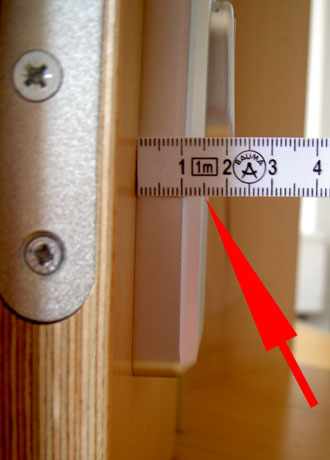 | Step 2 First measure the distance between the door and the end of the cylinder* on the outside. In the example opposite it is 15 mm. * Please read below the special feature of this example door. Here, an extra drilling protection is mounted, which is not measured. |
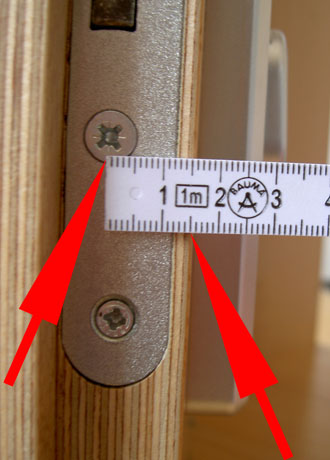 | Step 3 Measure from the centre of the cylinder (centre of the fixing screw) to the edge of the door. In the example opposite it is 15 mm. This gives you the external dimension with 15 + 15 mm = 30 mm. |
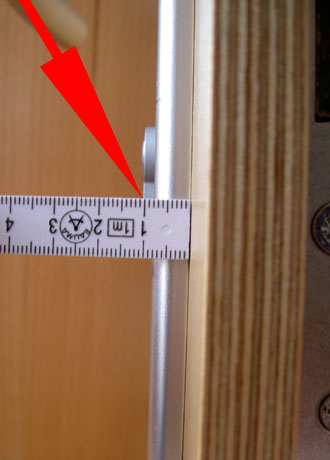 | Step 4 Measure the distance between the door and the end of the cylinder on the inside. In the example opposite it is 10 mm. |
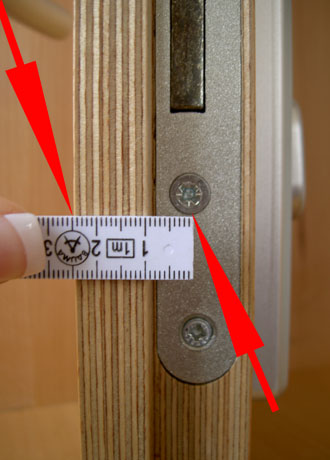 | Step 5 Measure from the centre of the cylinder (centre of the fixing screw) to the edge of the door. In the example opposite it is 25 mm. This also gives you the internal dimension with 10 + 25 mm = 35 mm. |
In our door example the dimension for the locking cylinder is If you have any questions about this, please do not hesitate to contact us. | |
| NOTE: When measuring the locking cylinder in the installed state, please note that some manufacturers' locking cylinders can be up to one millimetre longer (this is explained again on the respective product information pages). This is especially important for doors without fittings (doors that are flat on the outside). Locking cylinders with a length of 27 or 28 millimetres on the outside are preferred for this purpose. | |
| Drilling protection on the door fitting | |
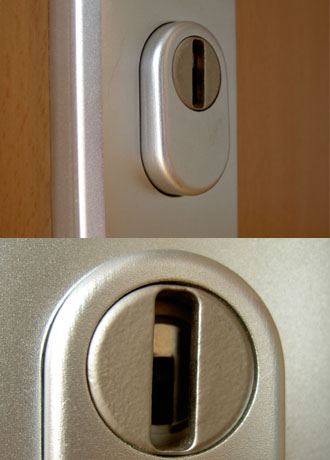 | In our door example, an additional drilling protection is mounted on the outside of the door to prevent the cylinder from being drilled open. As you can see here, there is a metal plate on bearings above the keyhole. This can be easily turned. A drill cannot reach the locking cylinder because the metal plate rotates at the same speed as the drill. This drill protection is not measured when measuring the locking cylinder. |

